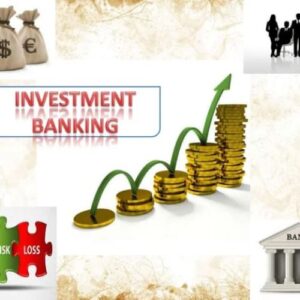Technology in Marketing Domain
- July 31, 2025
- Marketing
\
In the age of hyper-personalization and digital-first consumer behavior, marketing is being revolutionized by emerging technologies. From AI-driven product recommendations to AR-powered virtual trials, brands are blending creativity with code to deliver smarter, faster, and more engaging campaigns. But while the tech promises scale and precision, it also brings risks—data privacy, brand misalignment, and high implementation costs. The below table breaks down how leading technologies are reshaping marketing, with real-world examples, quantified benefits, and potential pitfalls. Whether you’re a brand strategist, digital marketer, or growth leader, these insights will help you future-proof your marketing playbook.
|
Technology |
Use Case |
Real Example |
Risk |
Cost-Benefit Analysis (with Numbers) |
|
Artificial Intelligence (AI) |
Personalized product recommendations |
Amazon’s AI suggests products based on user behavior |
Over-reliance on algorithms, privacy concerns |
Cost: $500K–1M/year. Benefit: Increases conversion rates by 20–30%, boosts AOV by 15–20% |
|
Machine Learning (ML) |
Customer churn prediction & retention |
Netflix uses ML to predict churn and personalize content |
Misleading signals, data drift |
Cost: ~$300K/year. Benefit: Reduces churn by 10–15%, saves $10–25M in subscriber revenue |
|
Generative AI |
Ad copywriting, blogs, and visual creatives |
Coca-Cola uses OpenAI’s GPT for marketing content generation |
Quality inconsistency, brand misalignment |
Cost: $20–50K/year/team. Benefit: 60–70% reduction in content turnaround time, 3x scale in output |
|
Augmented Reality (AR) |
Interactive product experiences (try-before-you-buy) |
L’Oréal’s AR app for virtual makeup trials |
Device dependency, UX issues |
Cost: $100–200K/project. Benefit: Boosts engagement by 80%, increases conversion by 20% |
|
Virtual Reality (VR) |
Immersive brand storytelling & virtual events |
IKEA’s VR showroom experience |
High production cost, low repeat use |
Cost: ~$250K. Benefit: Improves brand recall by 30–50%, generates 2–3x more time spent per user |
|
Natural Language Processing (NLP) |
Social listening and sentiment analysis |
Hootsuite uses NLP to track brand sentiment |
Misinterpretation of sarcasm or slang |
Cost: $50–100K/year. Benefit: Real-time PR management, 25–30% faster response to brand crises |
|
Chatbots (AI + NLP) |
Customer engagement and support automation |
H&M’s chatbot handles basic product inquiries |
Poor personalization, escalation delays |
Cost: $10–30K/year. Benefit: 40–60% reduction in human support cost, 24/7 availability |
|
Blockchain |
Ad fraud prevention and transparent influencer contracts |
MadNetwork ensures ad delivery transparency |
Adoption resistance, scalability |
Cost: ~$500K setup. Benefit: Reduces digital ad fraud losses by up to 30% |
|
IoT |
Hyperlocal & real-time marketing (e.g., smart shelves) |
Coca-Cola vending machines sending promo alerts |
Data overload, privacy |
Cost: $50–100/device. Benefit: Improves campaign targeting, increases impulse purchases by 10–15% |
|
5G |
High-speed video content, live interactive campaigns |
Nike’s 5G-enabled real-time AR campaigns in China |
Infra limitations, high initial cost |
Cost: Infra + media ~$1M. Benefit: Enables immersive campaigns, improves video engagement by 50% |
Get More Insights
What Certifications should I do for Investment Banking – The Only 3 Certifications That Actually Matter
Learn the three certifications that genuinely boost your chances of breaking into investment banking.
Read MoreMastering Risk Management: A Guide for MBA Students and Professionals
A practical guide to mastering risk management for MBA students and professionals in business and finance.
Read MoreLeveraging Structured Thinking in Career Transitions
Use structured thinking to navigate career transitions with clarity, confidence, and actionable steps.
Read MoreQUICK LINKS
- Home
- About
- Career Conversations
- Resume Reviews
- Mock Interviews
POLICIES
- Terms & Conditions
- Privacy Policy
- Refund Policy
CONTACT
- +91-81485-89887
- support@gocrackit.com
- #518, Ground Floor, 10th Cross, Mico Layout, BTM 2nd Stage, Bangalore - 560076


